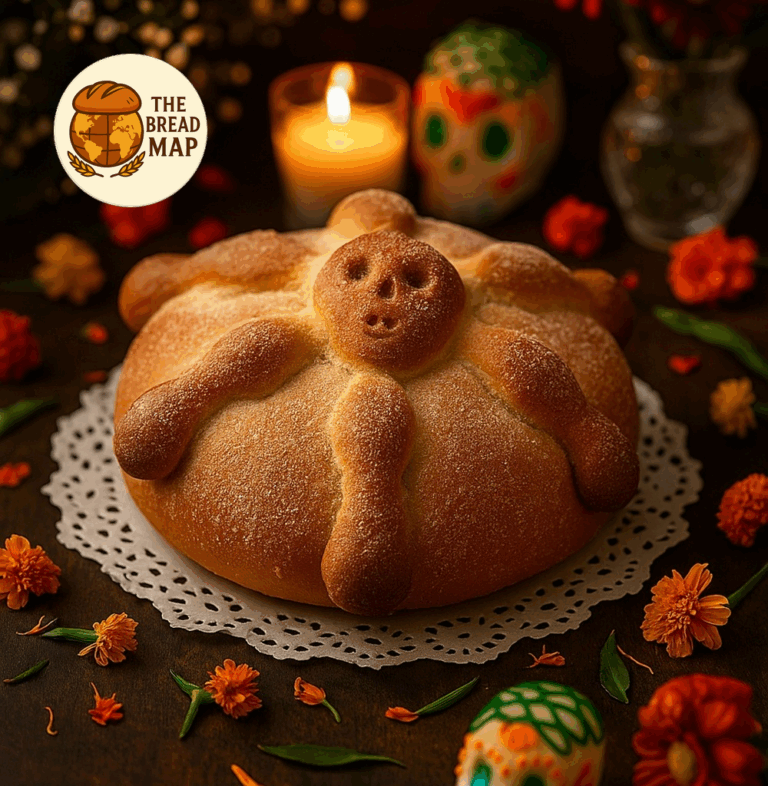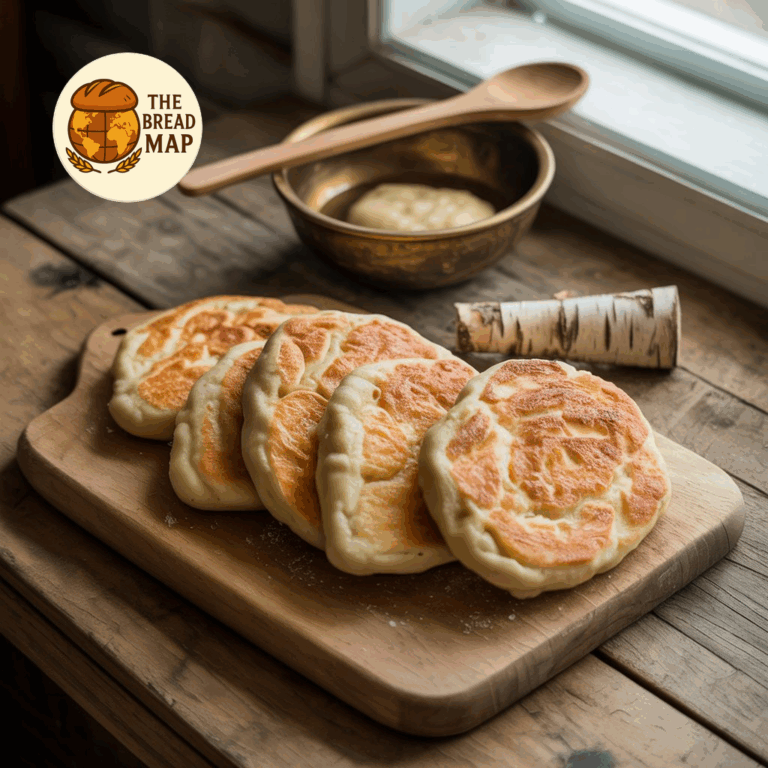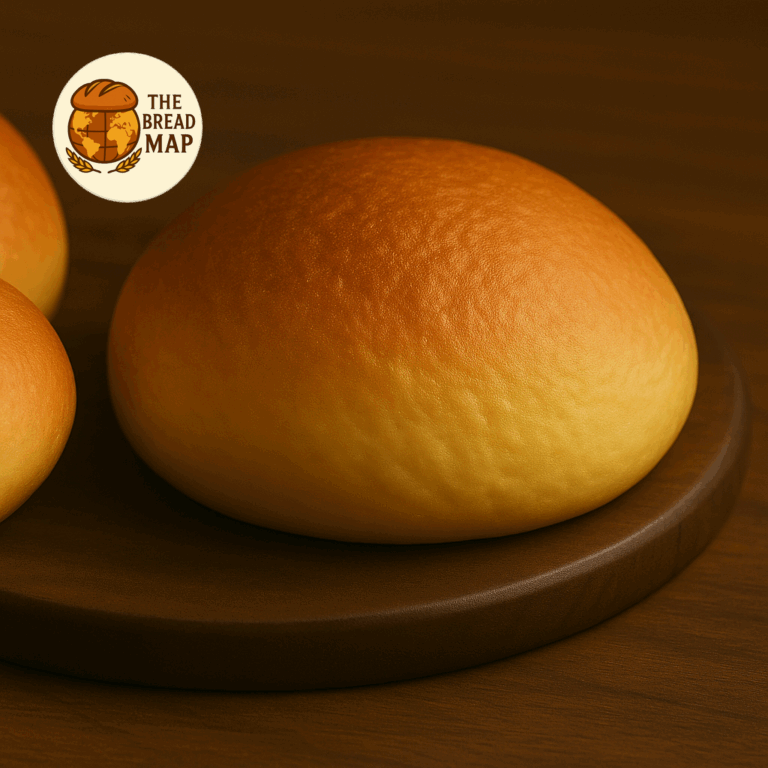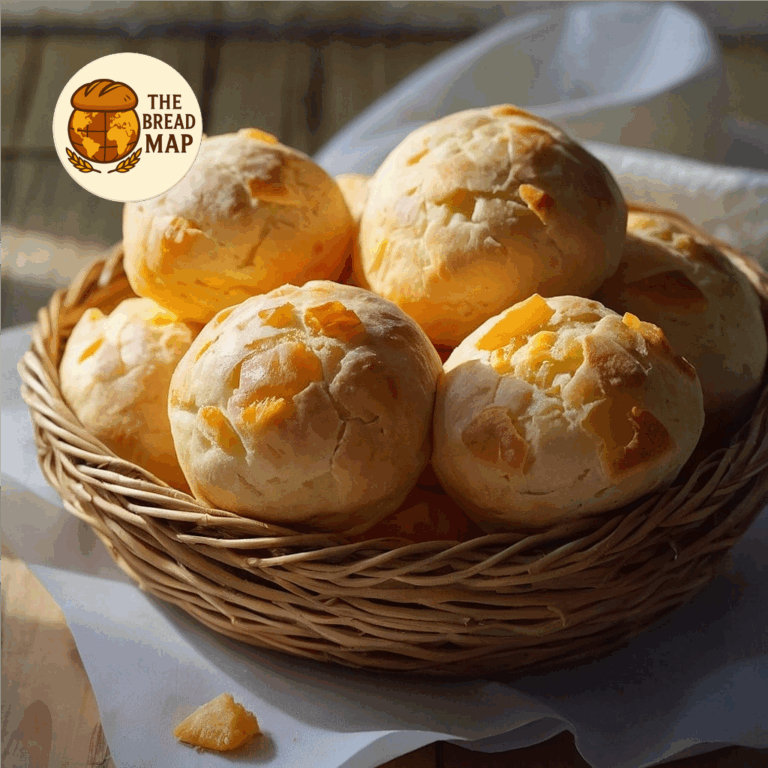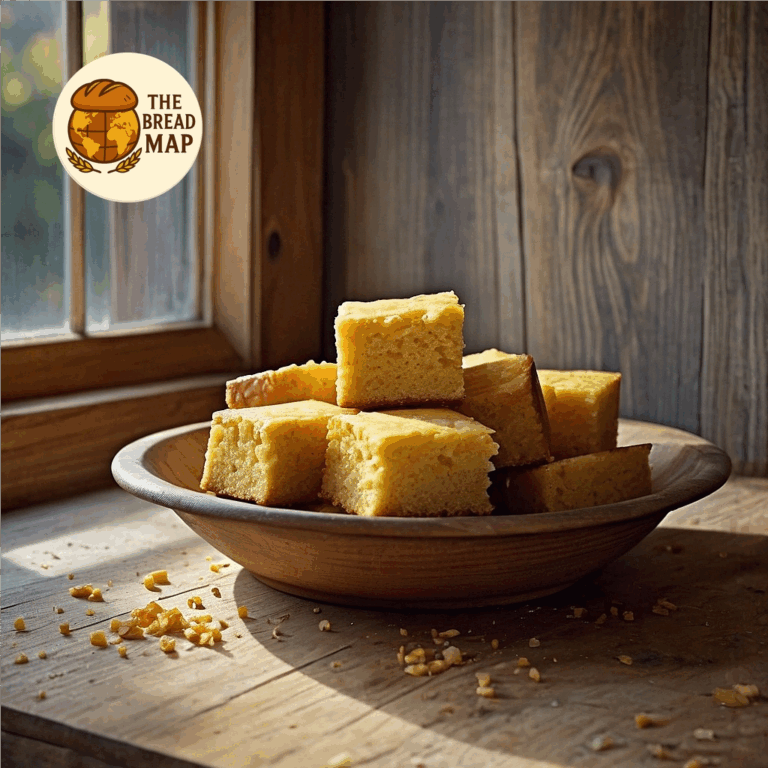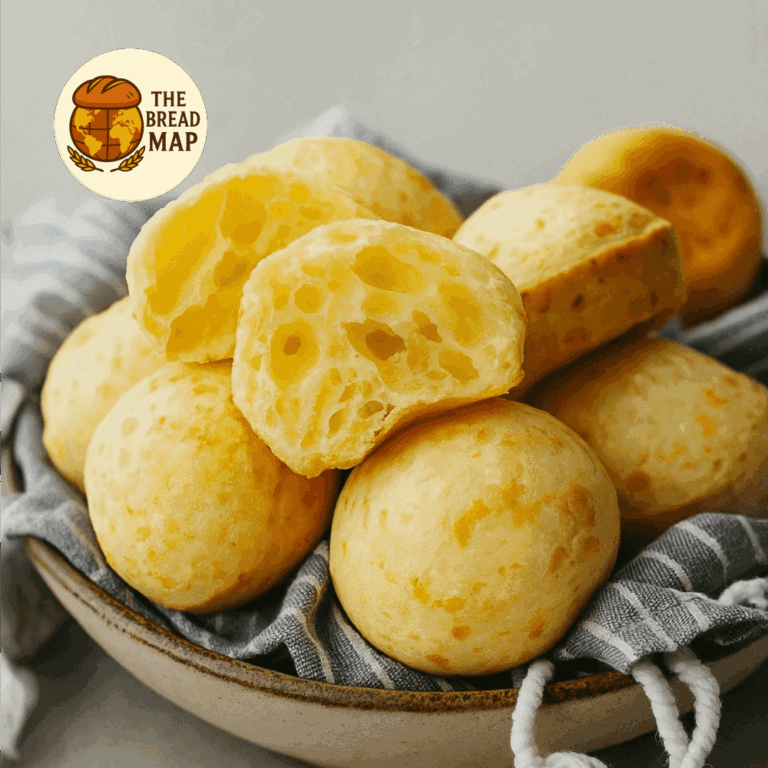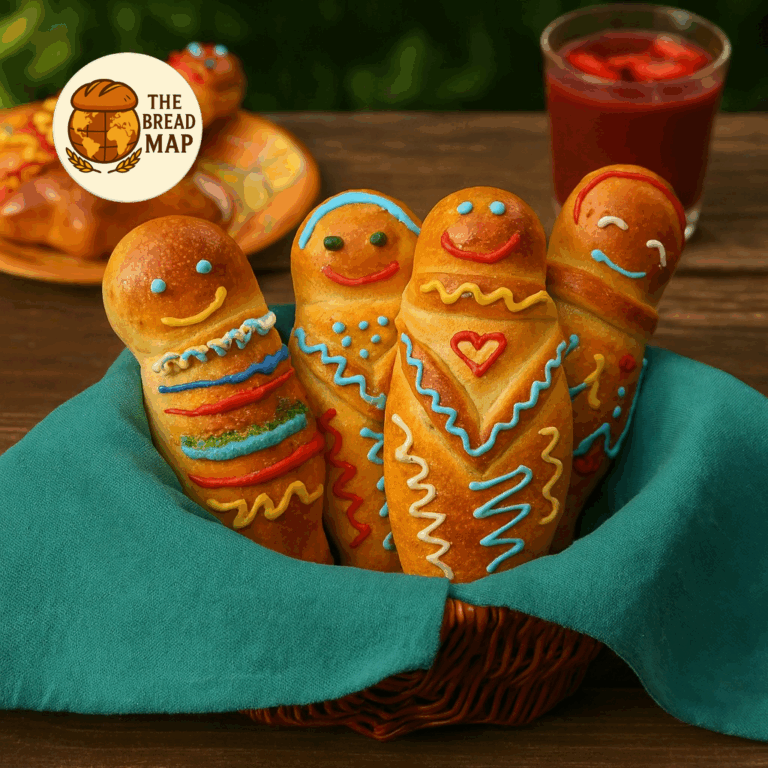
Each November 2nd in Ecuador, vibrant bakeries across the country overflow with whimsical, icing-covered bread figures known as Guaguas de Pan. These “bread babies,” often smiling and painted in colorful designs, are more than just sweet treats — they are edible tributes in the country’s cherished observance of Día de los Difuntos — the Day of the Deceased. Served alongside colada morada, a spiced fruit drink of ancient origins, Guaguas de Pan embody Ecuador’s beautiful blend of pre-Hispanic ritual, Catholic tradition, and heartfelt familial remembrance.
Historical Background
The tradition of Guaguas de Pan has deep Andean roots. Before the arrival of Spanish colonizers, indigenous communities in what is now Ecuador held ancestral ceremonies honoring the deceased with food offerings and symbolic figurines. After colonial influence introduced Catholic celebrations like All Souls’ Day, these customs fused, giving rise to new forms of expression — like baking. Over centuries, the symbolic effigies evolved from clay and corn dolls into sweet breads shaped like babies and adorned with cultural motifs.
Region of Origin
While Guaguas de Pan are beloved nationwide, they are especially prevalent in the Andean highlands of Ecuador, including cities like Quito, Cuenca, and Ambato. In rural and indigenous communities, the tradition remains deeply spiritual and is often observed with graveside picnics, where families gather at cemeteries, share food, and honor loved ones who have passed on. In larger cities, the tradition has become more commercial, with bakeries showcasing increasingly elaborate designs each year.
Ingredients and Preparation
Guaguas de Pan are as delightful in flavor as they are eye-catching. Made from a soft, lightly sweetened dough — similar to brioche or pan dulce — they are skillfully molded into baby or doll shapes, then baked and decorated with brilliant patterns.
- Main ingredients: wheat flour, eggs, sugar, milk, butter, and yeast
- Fillings: guava paste, dulce de leche, or fruit jams (optional, but popular)
- Decorations: bright royal icing, chocolate chips for eyes, or colored sprinkles
Each loaf is shaped into a human-like form — elongated bodies with rounded heads representing infants or children. Once baked, these figures are intricately decorated, often bearing facial expressions and traditional Andean embroidery motifs rendered in icing. It’s both a snack and an art form.
Cultural Importance
Beneath the sweetness and whimsy lies a respectfully rich cultural purpose: Guaguas de Pan are made to honor those who came before us. The word “guagua” is derived from the Quechua language, meaning “baby,” symbolizing life, renewal, and familial bonds. Sharing the bread with colada morada — a thick, deep-purple drink made with purple corn, pineapple, berries, spices, and herbs — is a ritual act connecting generations, both living and gone.
- Families visit cemeteries to eat Guaguas de Pan and drink colada morada beside the graves of ancestors.
- Schools often teach children to make and decorate their own guaguas, passing down the tradition.
- Artisans and bakers take pride in showcasing regional styles and techniques in the bread’s appearance and recipes.
Whether enjoyed in a solemn moment of remembrance or as part of a joyful cultural celebration, Guaguas de Pan are an enduring emblem of Ecuador’s respect for life, death, and everything that connects them. These sweet little breads carry the weight of history — cradled in flour, sweetened with memory, and shared in love.
